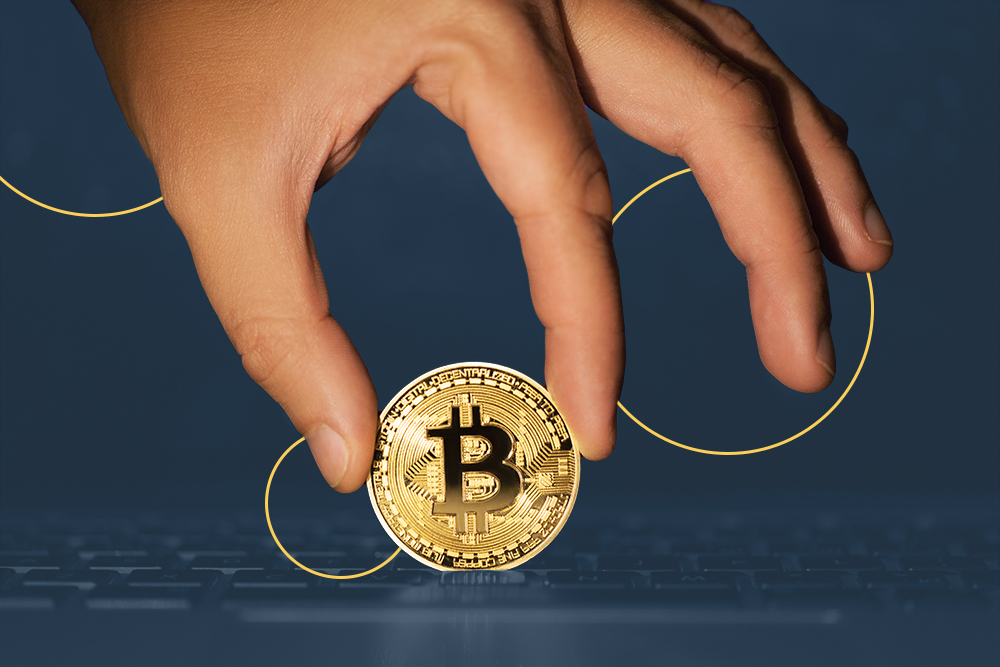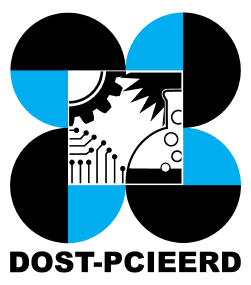
When hearing the term “Cryptocurrency” the first thing that comes to mind is Bitcoin. While Bitcoin stands as the undisputed giant in the world of cryptocurrency, the crypto market is far more diverse than meets the eye. Beyond the familiarity of Bitcoin, there are altcoins, unique to its features, that have the potential to 100x your investment if done correctly. As we delve further into this article, we’ll explore the basics of cryptocurrency, the top 10 crypto in 2024, altcoins, and tips before you invest in cryptocurrency that can redefine your investments and open an understanding of financial markets and possibilities. Without further ado, let’s jump right into it.
What is Cryptocurrency
Cryptocurrency is a revolutionary form of digital or virtual currency that leverages cryptographic techniques for secure financial transactions. Unlike traditional currencies issued by governments or central banks, cryptocurrencies operate on decentralized networks based on blockchain technology.
At its core, a blockchain is a distributed ledger that records all transactions across a network of computers. This decentralized nature ensures transparency, security, and immutability of the transaction history. The most well-known cryptocurrency, Bitcoin, was introduced in 2009 as the pioneer in this decentralized financial system.
Cryptographic techniques are employed to secure transactions and control access to the blockchain. Public and private keys are used to authenticate and authorize transactions. The use of cryptographic hashes ensures the immutability of data within each block.
What is Decentralized Finance (DeFi)
Decentralized Finance, commonly known as DeFi, refers to a transformative movement in the financial industry that leverages blockchain technology to recreate traditional financial systems in a decentralized manner. DeFi aims to provide an open and inclusive financial ecosystem that is accessible to anyone with an internet connection, bypassing the need for traditional intermediaries like banks or the central government agencies.
The key components of Decentralized Financed (DeFi) include Blockchain Technology and Smart Contracts.
What is Blockchain Technology?
Blockchain technology is a decentralized and distributed ledger system that enables secure, transparent, and tamper-resistant record-keeping of transactions across a network of computers. It serves as the foundational technology for various cryptocurrencies, such as Bitcoin, and has broader applications beyond digital currencies.
What are Smart Contracts?
Smart contracts are self-executing contracts with the terms directly written into code. They are computer programs that automatically enforce and execute predefined rules and agreements when specific conditions are met. Smart contracts operate on blockchain platforms, such as Ethereum, and are a key component in decentralized applications (DApps).
What are the Top 10 Cryptocurrency in 2024?
- Bitcoin (BTC)
Bitcoin (BTC) is the pioneering and most well-known cryptocurrency, created in 2009 by an anonymous entity or group using the name of Satoshi Nakamoto. It operates on a decentralized peer-to-peer network, utilizing blockchain technology to facilitate secure and transparent transactions without the need for a central authority.
Bitcoin is often referred to as digital gold and is recognized for its fixed supply of 21 million coins, providing a deflationary aspect. Transactions on the Bitcoin network are verified by a process called mining, where miners use computational power to solve complex mathematical puzzles.
Market Capitalization of Bitcoin as of December 2023: $809,470,870,090
Bitcoin Circulating Supply: 19,560,512 BTC
Maximum Supply of BTC: 21,000,000 BTC
Symbol: BTC
- Ethereum (ETH)
Ethereum (ETH) stands as a groundbreaking decentralized blockchain platform introduced by Vitalik Buterin in 2015. Distinguished by its capability to execute smart contracts, Ethereum goes beyond traditional cryptocurrencies like Bitcoin, enabling the creation of decentralized applications (DApps) and fostering constant development within its open-source community.
Market Capitalization of Ethereum as of December 2023: $269,843,208,882
Ethereum Circulating Supply: 120,233,028 ETH
Symbol: ETH
- Tether (USDT)
Tether (USDT) is a type of cryptocurrency known as a stablecoin. Launched in 2014, Tether is designed to maintain a stable value by pegging it to the value of a traditional fiat currency, typically the US Dollar. The concept behind stablecoins like Tether is to provide the benefits of cryptocurrencies, such as fast and borderless transactions, while minimizing the price volatility that is often associated with other digital assets like Bitcoin or Ethereum, and other altcoins.
Market Capitalization of Tether as of December 2023: $89,657,673,552
Tether Circulating Supply: 89,647,599,294 USDT
Symbol: USDT
- Binance Coin (BNB)
Binance Coin (BNB) is the native cryptocurrency of the Binance exchange, one of the world’s largest and most popular cryptocurrency exchanges. Created in 2017 as an ERC-20 token on the Ethereum blockchain, BNB later migrated to Binance’s native blockchain, Binance Chain, in 2019. BNB serves multiple purposes within the Binance ecosystem.
Market Capitalization of Binance as of December 2023: $35,432,835,900
Binance Coin Circulating Supply: 151,698,245 BNB
Symbol: BNB
- XRP (XRP)
XRP, the native cryptocurrency of the Ripple network, was created in 2012 to revolutionize cross-border payments. Engineered by Ripple Labs, XRP operates on a decentralized ledger with a focus on efficiency and scalability. Known for its swift transaction times of a few seconds, XRP serves as a bridge currency, facilitating liquidity and enabling the seamless exchange of various fiat currencies.
Positioned as a solution for financial institutions and payment service providers, XRP aims to streamline international money transfers.
Market Capitalization of XRP as of December 2023: $34,064,595,487
XRP Circulating Supply: 53,888,571,585 XRP
Maximum Supply of XRP: 100,000,000,000 XRP
Symbol: XRP
- Solana (SOL)
Solana (SOL) is a high-performance blockchain platform designed for decentralized applications (DApps) and crypto projects. Launched in 2020, Solana aims to provide fast, secure, and scalable solutions for developers.
It employs a unique combination of innovations, including a high-performance consensus mechanism called Proof of History (PoH) and a fast Proof of Stake (PoS) consensus, enabling Solana to process a large number of transactions at low costs.
Market Capitalization of Solana as of December 2023: $27,460,473,147
Solana Circulating Supply: 424,332,716 SOL
Symbol: SOL
- U.S. Dollar Coin (USDC)
Similar to Tether (USDT), The U.S. Dollar Coin (USDC) is a type of stablecoin pegged to the value of the United States Dollar on a 1:1 ratio. Launched in 2018 as a joint venture between Circle and Coinbase, USDC is an ERC-20 token built on the Ethereum blockchain.
As a stablecoin, USDC aims to provide the benefits of digital currencies, such as fast and borderless transactions, while maintaining a stable value by being fully backed by reserve assets in U.S. dollars.
Market Capitalization of U.S. Dollar Coin as of December 2023: $24,498,670,165
U.S. Dollar Coin Circulating Supply: 24,501,399,704 USDC
Symbol: USDC
- Cardano (ADA)
Cardano (ADA) is a decentralized blockchain platform designed for the development of smart contracts and decentralized applications (DApps). Launched in 2017, Cardano aims to provide a secure and scalable infrastructure for the execution of financial applications and services.
Market Capitalization of Cardano as of December 2023: $14,442,330,365
U.S. Dollar Coin Circulating Supply: 35,309,211,328 ADA
Maximum Supply of Cardano: 45,000,000,000 ADA
Symbol: ADA
- Dogecoin (DOGE)
Dogecoin (DOGE) is a cryptocurrency that started as a meme but has evolved into a popular digital asset with a supportive and enthusiastic community. Initially created in 2013 by Billy Markus and Jackson Palmer as a lighthearted parody of other cryptocurrencies, Dogecoin features the Shiba Inu dog from the “Doge” meme as its logo.
Despite its playful origins, Dogecoin gained popularity and has been used for various tipping and charitable activities on social media platforms.
Market Capitalization of Dogecoin as of December 2023: $12,753,319,134
Dogecoin Circulating Supply: 142,091,886,384 DOGE
Symbol: DOGE
- TRON (TRX)
TRON (TRX) is a blockchain platform and cryptocurrency that aims to create a decentralized digital entertainment ecosystem. Launched in 2017 by Justin Sun, TRON seeks to build a platform for content creators where they can share and distribute their content without intermediaries. TRON is known for its focus on scalability, high throughput, and decentralized applications (DApps).
Market Capitalization of TRON as of December 2023: $9,225,981,776
TRON Circulating Supply: 88,517,859,155 TRX
Symbol: TRX
Data gathered from CoinMarketCap
Important Tips Before Investing in Cryptocurrency
Before investing your money in cryptocurrency, it is important to understand and digest these tips.
- Research
Before investing in any cryptocurrency, conduct thorough research on the project, its technology, team, use case, and community support. Understand the problem it aims to solve and assess its potential for long-term viability.
Consider factors such as the project’s whitepaper, development progress, and partnerships. Informed decisions based on diligent research can significantly reduce the risks associated with cryptocurrency investments.
- Don’t be affected by FOMO / Hype:
Cryptocurrency markets are often influenced by fear of missing out (FOMO) and hype. While rapid price movements can be enticing, it’s crucial to make decisions based on fundamentals rather than short-term excitement.
Avoid impulsive actions driven by market noise and social media trends. Establish a clear investment strategy, set realistic goals, and stick to your plan. Patience and a disciplined approach can help you make more rational and calculated investment decisions, minimizing the impact of market hype on your portfolio.
- Diversify Your Portfolio
Spread your investment across multiple cryptocurrencies rather than putting all your funds into one. Diversification helps mitigate risk, as the performance of different cryptocurrencies can vary. A well-diversified portfolio can potentially provide more stable returns, especially in the volatile cryptocurrency market.
Consider including a mix of established cryptocurrencies with a track record and promising projects with growth potential. This strategy can help you navigate market fluctuations and reduce the impact of poor performance in any single asset.
Where to Invest in Cryptocurrency in the Philippines this 2024?
- Coins.ph
Coins.ph is an e-wallet platform in the Philippines used to transit money, pay bills, and other financial transactions. Coins.ph has dozens of cryptocurrencies available for you to purchase or sell.
- PDAX
A BSP regulated exchange, PDAX allows you to buy and sell crypto currencies directly with the Philippine Peso, with a minimum spend of PHP200.
- eToro
Besides stock investments, eToro has cryptocurrencies in its platform, allowing crypto investors to buy and sell through eToro.
- GCash
Similar to Coins.ph, GCash has now a crypto exchange platform powered by PDAX. GCash all has the available assets listed in the top 10 cryptocurrencies for 2024.
- Binance
Binance is one of the most popular platforms in the Philippines used in buying and selling cryptocurrency that offers almost all available currency in the market. Binance has a minimal trading cost but with expensive withdrawal costs.
News: Did you know? Philippine’s Security and Exchange Commission plans to block access to world’s largest crypto exchange, Binance. Starting November 29, 2023 the SEC will give Filipino users months to pull out investments from Binance.
Conclusion
Cryptocurrency presents unprecedented opportunities to revolutionize traditional finance, offering innovative solutions and decentralization. However, this transformative potential comes with inherent risks, primarily stemming from the volatile nature of the crypto market.
Aspiring investors must recognize that while cryptocurrencies can be a game-changer for personal finance, success is contingent on thorough research, understanding the complexities of the digital asset landscape, and maintaining a disciplined approach.









